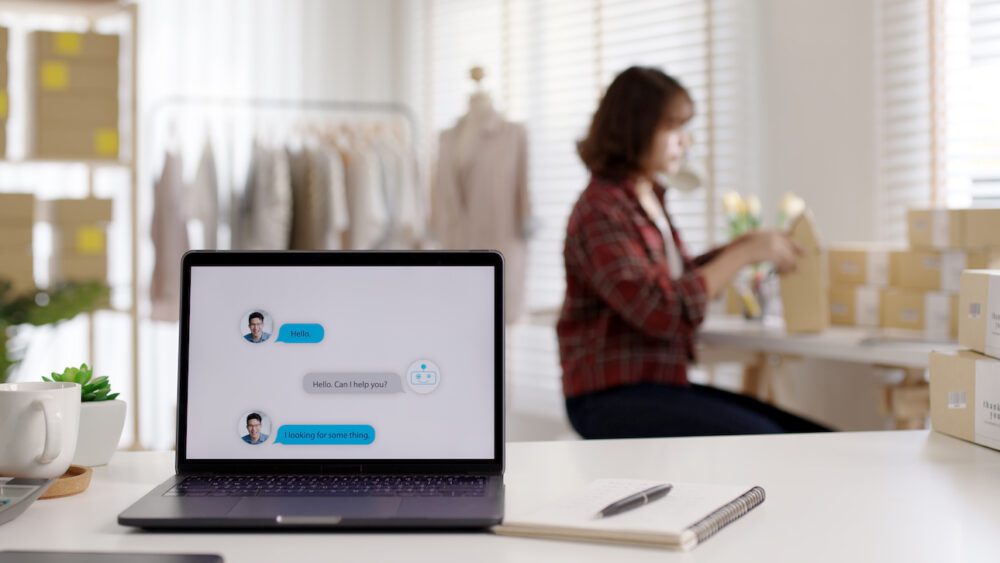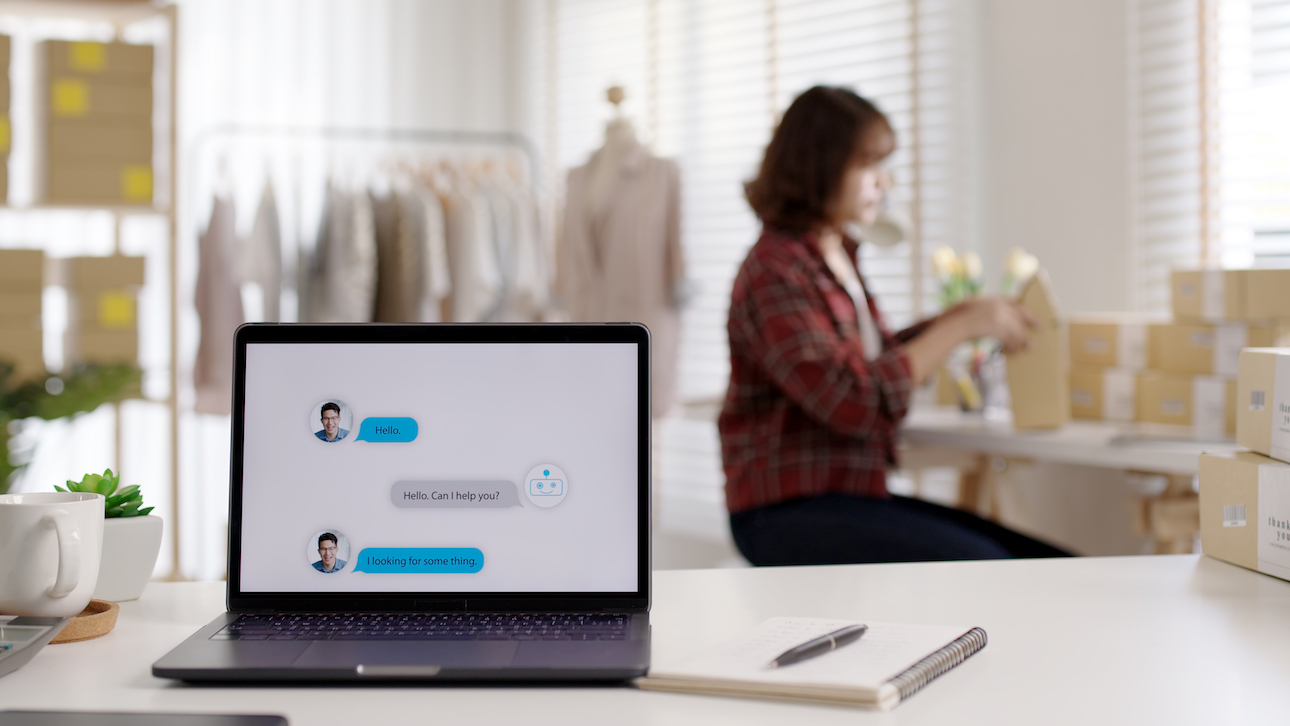When people think ‘robot’ they may visualise a 1960s-style sci-fi creation, but today’s robots come in many forms. And although many of these may be invisible to consumers in the form of chatbots and automated services, they are forging the way for a new era of customer experience.
We’ve seen plenty of dynamic use cases of robots in modern day retail, from Amazon introducing automated retail through their digital Amazon Fresh grocery stores and robot-powered micro-fulfilment, to a whole host of organisations investing in chatbots to provide assistance to online shoppers.

And with Insider Intelligence predicting that consumer retail spend via chatbots worldwide will reach $142 billion by the end of 2024, we find ourselves asking – is the chatbot leading the way of today’s digital-first economy?
The age of the chatbot
The scale and potential of robotisation boils down to its role in improving CX. We’ve seen during the pandemic that consumers prefer a blend of approaches when interacting with brands – and the retail industry is investing in new ways to enable this.
For some time, we’ve spoken of chatbots as ‘the future’. Yet we’re well past the tipping point of automated conversation as a new and emerging technology. According to research, 60% of people have engaged with a chatbot in the last year, and 35% of consumers say they would like to see more companies taking advantage of chatbots. Chatbots are now simply part of modern life, accelerated by the pandemic and an increased desire from consumers to engage with brands instantly and digitally. For businesses, this means embracing automation to greet customers at the digital front door, on a landing page website, or providing support for FAQs by making sense of what’s been said, understanding intent, and generating a suitable answer.
Breaking down the CX advantages
Businesses shouldn’t view implementing a chatbot as a tick-box exercise. Robotisation like this has real, tangible benefits in terms of automating services, reducing pressure on human agents, and the provision of instantaneous communication.
Not only are chatbots proliferating in retail settings, but the next generation workforce is heralding their use in corporate environments. Gartner predicts that in 2022, 70% of white-collar workers will interact with conversational platforms daily, given that chatbots cater to millennials’ demand for instant, digital connections that keep them up to date.
The crux of their effectiveness is the immediacy of response. According to Google, over half (53%) of website visits are abandoned if a mobile page takes longer than 3 seconds to load. Tech dependency means we’re becoming more impatient with slower services, and chatbots can help approach this challenge by dispensing wait times with human agents. Chatbots can initiate the conversation, asking for an overview of why a customer is enquiring, and potentially being able to answer the question through rule-based software. In the instance a more sophisticated response is needed, the chatbot can then hand this over to dedicated customer service teams, ensuring all relevant context is at the agent’s fingertips, so they can provide the right support.
Advancements in chatbot tech
Chatbots are nothing new, yet misconceptions still exist around their efficacy. Years ago, rudimentary chatbots could only answer very basic questions, and would prove inadequate replacements for speaking to a human agent. Today, however, artificial intelligence (AI) chatbots are trained to understand customer intent through Natural Language Processing (NLP). Customers don’t have to stick to a set script as the chatbot is able to make sense of what’s been said, understand the intent, and generate a suitable answer. This makes interaction much more natural and avoids scenarios where deviation from the script drives the conversation to a grinding halt. And, thanks to machine learning, these chatbots get smarter over time as they’re exposed to more conversational data. A report by IBM found that chatbots can answer 80% of questions.
To capitalise on technology advancements in this space, French luxury fashion brand DIOR Beauty recently launched an industry-first campaign with global influencer Jisoo. Users can interact on WhatsApp in a way that lets them feel like they’re talking to Jisoo – they can choose the type of content they want to receive, from themed videos to exclusive behind the scenes footage of Jisoo’s life as a brand ambassador.
Harnessing chatbot capabilities to deliver enriched communications like this means that brands can connect one-on-one without the challenge of ensuring individual human interactions. Yet, when necessary, the switch from chatbot to human agent is imperceptible, as part of a consistent, seamless digital service.
Chatbots as a force for good
Instant communication through chatbots has positive effects in terms of keeping customers engaged and informed. Not only are we seeing chatbots make CX waves in the private sector, but they can also be used as tech for good.
In response to the COVID-19 pandemic, several public and government health organisations across the world were faced with the challenge of providing up-to-date information quickly and at scale, whilst also combatting misinformation. For many, the answer was using chatbots to alleviate pressure on contact centres, who were already facing a significant influx of calls, while ensuring the public had access to the latest advice and guidance.
These chatbots, built by Infobip and WhatsApp, were easily accessible over a publicly available number. Contact was initiated by the user through entering a number in their contact list and sending “Hi”. This started a dialogue with the WhatsApp chatbot, where users could choose from a list of topics depending on the information they were looking for.
Chatbots like this were used across the globe – from the UK to India – to ensure the right information was accessible 24-7, and so contact centres could function as efficiently as possible during an exceptionally busy time.
Final thoughts
Customers expect to reach businesses whenever they want, wherever they want, and for the experience across each channel to be integrated and seamless. A customer might discover your product on Instagram, send a direct message on the app for more information, go to your website for purchase, and then remain in touch via WhatsApp for ongoing support. At every stage they expect consistency.
Chatbot messages, WhatsApp updates, email confirmations – these can all be managed by an invisible robotic hand, to keep customers updated and satisfied across a plethora of channels. Robots aren’t gadgets and gizmos that have no purpose – they are here to stay, and their involvement in boosting CX will only grow.
















